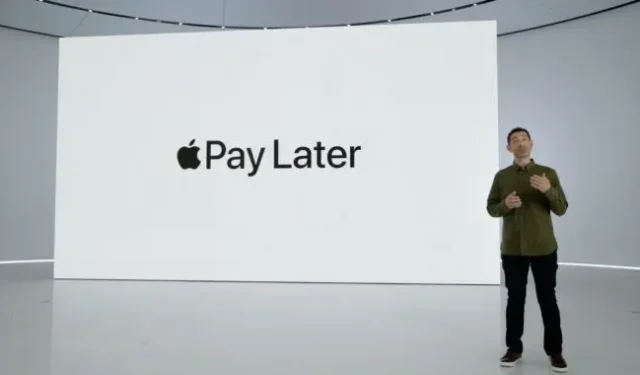Apple pulls out of Goldman Sachs and does its own lending

Apple is making its biggest move in finance by offering direct-to-consumer loans for its new “buy now, pay later”product, taking on the role that banking partners like Goldman Sachs play in its other lending services.
Short-term loans provided through the iPhone maker’s new Apple Pay Later service, which was announced on Monday, will be issued through Apple subsidiary Financing LLC, the company said.
Apple Pay Later will be adopted by millions of U.S. retailers who already use the iPhone mobile and online payment service, giving it broad reach and an enviable customer base that can already afford to shell out for the company’s latest smartphone.
Big Tech’s move into mainstream banking has long been worries on Wall Street after years of an uneasy alliance in areas like mobile payments. Apple has worked with Goldman in the past to issue credit cards in the US, as well as banks such as Barclays in the UK to offer funding to buy its own devices.
However, the role of these banks has decreased in the latest financial product.
Goldman facilitates Apple Pay Later by allowing Apple to access the Mastercard network, since the iPhone maker does not have a license to directly issue payment credentials. But Apple handles underwriting and lending through its new subsidiary.
Goldman said in a statement that it is “excited to see our partnership with Apple continue to grow.”
This setup will allow Apple to earn exchange fees on every transaction, as well as give the company more control over data and help accelerate the international expansion of its financial products. However, if the customer fails to repay the loan, Apple must absorb the losses.
Apple has previously rolled out other online services such as Apple Music, iCloud and TV Plus in dozens of countries at the same time as the US launch or shortly thereafter, but the expansion of its financial services has been slower. Apple Card is currently only available in the US.
While the company has declined to disclose its specific funding mechanism, Apple can easily afford to borrow from its own balance sheet, especially for short-term loans. According to the latest quarterly results, he had a net cash of $73 billion at the end of March.
Buy Now, Pay Later is the latest addition to Apple’s growing array of financial services managed through the Wallet app preinstalled on every iPhone.
Apple Pay, which debuted in 2014, allows iPhone and Apple Watch owners to use credit and debit cards by connecting their devices to wireless readers in stores. In 2017, Apple added the ability for users to make peer-to-peer payments through a service now called Apple Cash.
Apple said it currently sees no need to apply for a banking license.
Several tech companies, including Amazon, PayPal, Stripe, Shopify, and Block, formerly known as Square, are offering funding to small businesses that sell through their platforms. However, several large tech groups, in addition to specialist fintech companies such as Klarna and Affirm, have provided consumer credit for general purchases, as planned by Apple.
Buyers of premium-priced Apple gadgets tend to have higher incomes than other technology buyers, making them less exposed to credit risk. Apple may also use customer data, such as how long users have owned an iPhone or how often they purchase apps from the App Store, to determine if a customer is in good standing.
Apple said its decision to go it alone was in part to avoid sharing personal data with third parties. The company will not charge fees for late payments in accordance with Klarna and Affirm, but will restrict access to further short-term credit.
In March, Apple bought British fintech company Credit Kudos. The startup is using machine learning to create an alternative to traditional credit scores, which have been criticized as a way to accurately assess a consumer’s finances.
Leave a Reply